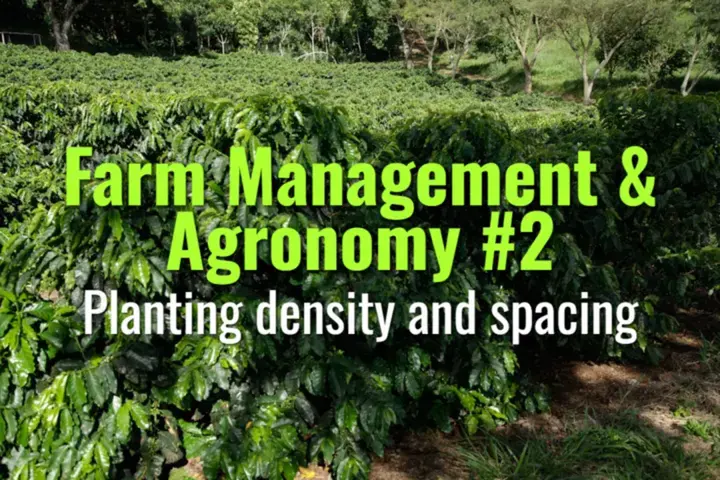Planting density and spacing
This topic explains how planting density and spacing affect coffee growth, yield, and quality, and provides guidelines for optimizing farm layout under different conditions.
- Coffee Basics Nerds
- 2 min read
Article 2 of 12 in Farm Management & Agronomy/

Importance of Planting Density
- Determines how many trees are planted per hectare.
- Influences competition for sunlight, water, and nutrients.
- Affects disease spread, ease of management, and yield potential.
General Guidelines
- Arabica: Typically 2,000–5,000 trees/ha depending on altitude, fertility, and management.
- Robusta: Can reach 1,000–3,000 trees/ha due to larger plant size and branching.
- Shade systems: Lower densities recommended to reduce competition.
- Intensive systems: Higher densities possible with dwarf varieties (Caturra, Catuaí, Castillo).
Common Spacing Models
- Traditional: 2.5 m × 2.5 m (~1,600 plants/ha).
- Semi-intensive: 2.0 m × 2.0 m (~2,500 plants/ha).
- Intensive (dwarf/compact varieties): 1.5 m × 1.5 m or closer (>4,000 plants/ha).
- Robusta spacing: Often wider (3 m × 3 m) due to tree size.
Factors Affecting Spacing Decisions
- Variety/cultivar traits: Compact vs tall varieties.
- Altitude and slope: Steeper slopes often require terracing and wider spacing to prevent erosion.
- Soil fertility: Rich soils support higher density; poor soils need wider spacing.
- Mechanization: Requires uniform, wider rows for equipment access.
- Shade use: Lower densities under heavy shade to avoid excessive competition.
Trade-Offs
- High density:
- Pros: Higher yield per hectare, better land use efficiency.
- Cons: Greater competition, higher input needs, higher disease risk.
- Low density:
- Pros: Lower competition, better airflow, healthier trees.
- Cons: Lower yields, less efficient land use.
Best Practices
- Conduct soil and climate assessments before deciding.
- Match density to management capacity (labor, fertilizer, irrigation availability).
- Use contour planting on slopes to prevent erosion.
- Regular pruning required in high-density systems to maintain productivity.
Lasting Importance
Optimal planting density and spacing balance yield, quality, and sustainability. Proper design ensures efficient land use, healthy plants, and long-term productivity while adapting to local terroir and farm goals.